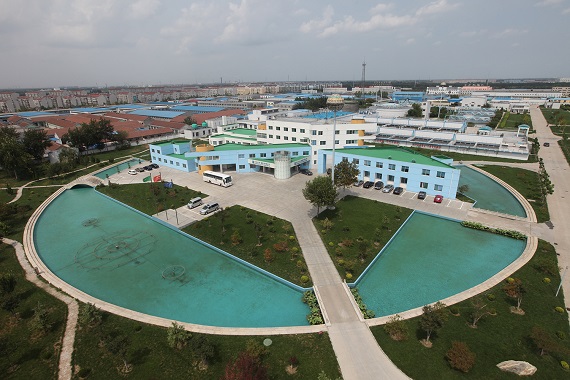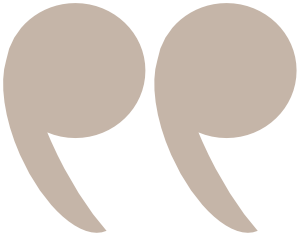 This article by Jennifer Tan (left, Director, Research & Products, Equities & Fixed Income, at the Singapore Exchange) was published in SGX's kopi-C: the Company brew series on 3 August 2018. The article is republished with permission.
This article by Jennifer Tan (left, Director, Research & Products, Equities & Fixed Income, at the Singapore Exchange) was published in SGX's kopi-C: the Company brew series on 3 August 2018. The article is republished with permission.
|
For calligraphy buff Wang Tianyi, the 5,000-year-old art of writing Chinese characters with a brush and ink on rice paper, known as 书 法 (shu fa), is not merely a hobby - it's a discipline that hones skills and develops psyches.
Wang holds a Doctorate degree in Economics, a Master's degree in Management, and a Bachelor's degree in Electronics from Tsinghua University. |
 China Everbright Water's Zibo Wastewater Treatment Plant
China Everbright Water's Zibo Wastewater Treatment Plant
Fragmented Market
Wang hailed the Group's decision to kickstart operations in China's eastern coastal region - including the provinces of Jiangsu and Shandong - as a smart move.
"That was good for us because of the stronger economic performances of these eastern coastal cities," he noted. "Our operations have since expanded to the central and western regions, in line with the country's changing economic needs."
The Group has also focused on expanding its presence in Tier 1 and 2 cities - which have higher income and industrial production levels, and hence, larger volumes of wastewater - than Tier 3 and 4 cities.
As of 31 March 2018, Everbright Water had secured 95 projects, and its total water treatment capacity exceeded 5 million cubic metres per day. The bulk comprises 78 municipal wastewater treatment projects, with the remainder involving industrial wastewater treatment, water environment management, reusable water, water supply, as well as sludge treatment and disposal. Its total project investment amounted to approximately 16.7 billion yuan.
"We're on track to grow our total water treatment capacity to 10 million cubic metres per day by 2020, which would rank us among the top three water players in China, up from fourth or fifth position currently," Wang said.
China's wastewater treatment market remains fragmented, with the largest player in the industry - Hong Kong-listed Beijing Enterprises Water Group Ltd - holding a share of about 7%.
 We're on track to grow our total water treatment capacity to 10 million cubic metres per day by 2020, which would rank us among the top three water players in China, up from fourth or fifth position currently. We're on track to grow our total water treatment capacity to 10 million cubic metres per day by 2020, which would rank us among the top three water players in China, up from fourth or fifth position currently.- Wang Tian Yi |
The country's wastewater treatment industry is estimated to reach US$58.2 billion by 2022, from US$42.1 billion in 2017, reflecting a CAGR of 6.7%, BCC Research said in a report published in April 2018.
While growth in this sector over the next five years is expected to slow from the double-digit annual expansion seen over most of the past decade, it will still be faster than many other countries globally, the report noted.
Over the years, Everbright Water has continuously emphasised its ethos of "technology leads development", Wang said.
The Group aims to boost its tech research and development (R&D) capabilities through mergers and acquisitions (M&As), adopting an asset-light approach, and focusing on industrial-academic collaborations that would encourage commercialisation of research results.
"Our research will focus on areas such as water environment management, integrated utilisation of water resources, and comprehensive protection of water ecology," he added.
Last year, the Group filed 59 patent applications - a number that exceeded the total sum filed in previous years - and was granted 21 patents. It also expanded its business scope to new areas, such as water supply and standalone pipeline networks.
In February, the Group set up an 80%-owned joint-venture company in Germany to pursue R&D, engineering services, technology transfer, and business development in environmental services. The venture is expected to create overseas business channels, enhance international exchanges, and widen the pool of available talent.
 Going Green Going Green |
||||||||||||||||
|
Everbright Water will also proactively explore opportunities in both domestic and overseas markets, in line with key national strategic plans such as the Yangtze River Economic Belt, and development of the green Belt and Road Initiative, Wang said.
"In China, pollution control has been named as one of the three tough battles that the country must fight in the coming years," Wang noted. |
||||||||||||||||
Financial results
| Year ended 31 Dec (HK$'000) |
FY2017 | FY2016 | FY2015 | FY2014 |
| Revenue | 3,591,633 | 2,494,037 | 1,815,150 | 1,050,755 |
| Gross Profit | 1,230,587 | 905,652 | 824,224 | 596,471 |
| Profit Attributable to Owners of Company | 513,356 | 349,343 | 406,242 | 292,796 |
| Quarter ended 30 Jun (HK$'000) | 2QFY2018 | 2QFY2017 |
yoy chg |
| Revenue | 1,319,368 | 868,717 | 52% |
| Gross Profit | 426,423 | 294,528 | 45% |
| Profit attributable to owners | 192,618 | 140,550 | 37% |
Source: Company data
| Outlook & Risks | ||
|
||
China Everbright Water Ltd
Everbright Water is an environmental protection company focusing on water environment management, that is listed on SGX Mainboard. Its direct controlling shareholder is HKEx-listed China Everbright International Ltd.
The Group is principally engaged in water environment management, sponge city construction, river basin ecological restoration, water supply, waste water treatment, reusable water, waste water source heat pump, sludge treatment and disposal, research and development of water environment management technologies, and engineering construction.
Its geographical footprint spans East, Central, South, North, Northeast and Northwest China, including Beijing, Jiangsu, Shandong, Shaanxi, Henan, Hubei, Guangxi Zhuang Autonomous Region, Liaoning and Inner Mongolia Autonomous Region. Currently, the Group invests in and operates water treatment projects with a daily treatment capacity exceeding 5.0 million m³.
The company website is: www.ebwater.com
The ccompany's Stock Facts page is here.
For the company's financial results for the 2nd quarter ended 30 June 2018, click here.








